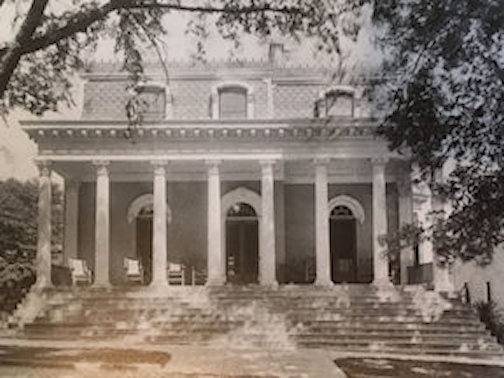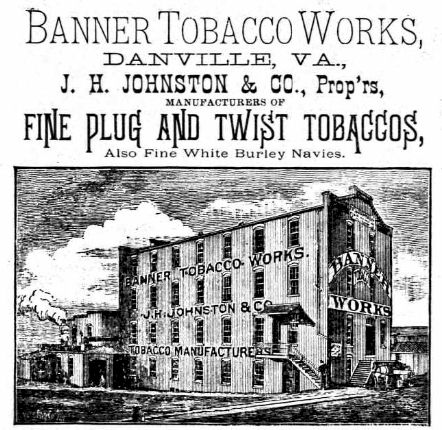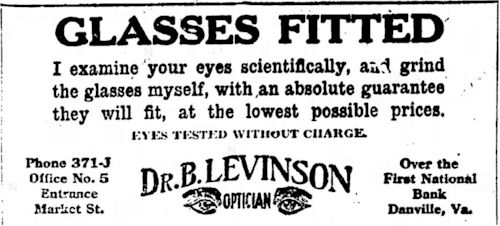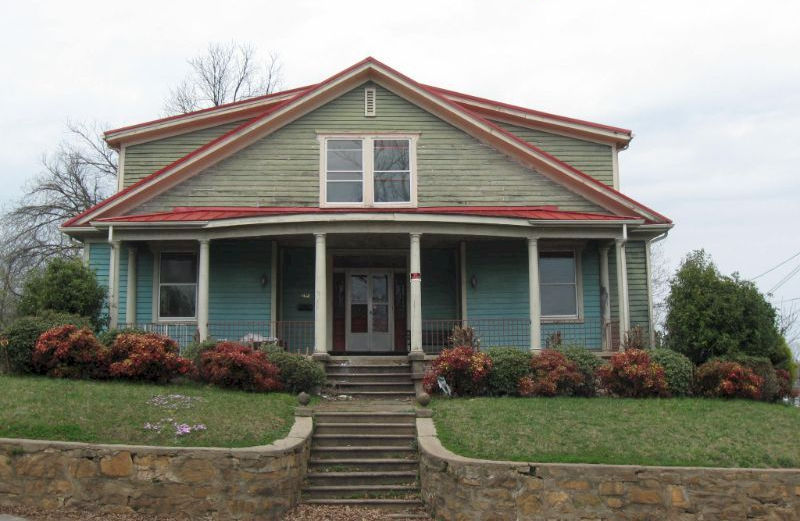The latest property to be offered by the city is the Johnston house at 802 Green Street (corner of Jefferson Street), so called in honor of the first known residents of the home.
John Henry Johnston, who resided there from 1890, was born in 1841 in Caswell County to Thomas Mitchell and Sallie Richmond Johnston. John married Hellen Wallace Hatchet in August of 1876 in Danville. The couple had three children, Helen M., Juliette, and Willie Johnston.
Mr. Johnston was a tobacconist and, prior to his residence on Green Street, owned a prominent home at 712 Main Street (where the Federal building is presently located) shown below. That home eventually became the Tuscarora Club. Learn more about that location in Now and Then #1.

Johnston was a principle in Banner Tobacco Works and J.H. Johnston & Co. His factory on Loyal Street, shown below, was said to have the latest improved machinery for manufacturing tobacco by steam power.

Mr. Johnston appears to have been a colorful character. Several incidents are recorded in early newspapers in which he was involved in altercations, typically about defamation of some sort or another. The most significant of these occurred in 1882, while serving as the city’s mayor when he was involved in a disagreement with John E. Hatcher, a former chief of police, in regard to the “disposal made of certain fines”. On September 9th of that year, the two men exchanged words and then “scuffled,” during which Johnston shot Hatcher “through the body.” Hatcher died two days later, and Johnston was consequently indicted for murder – a charge for which it seems, inexplicably, he was expected to walk away from. He was, indeed, acquitted in December of that year, though a series civil suits was brought against him by the family.
Johnston was Mayor during the Danville Riot of 1883, and, when the dust settled, it was he who received partial blame for misrepresenting the events – an ordinary misunderstanding – into a political (and racial) spectacle that resulted in the deaths of four and the injury of at least four others.
In 1890, during his residence on Green Street, Mr. Johnston was appointed postmaster of the city of Danville – a presidential appointment at that time.
On his death on May 3, 1915 he was living at 566 W. Main Street, about where Swicegood Funeral Home is now.
Following the Johnston family, the home was inhabited by William and Nellie Lonhoff. William was a tailor and a shopkeeper who moved here from Washington, D.C. They did not stay long before they bought 34 acres near the golf course. Upon his death in 1924, Lonhoff’s estate included a Nash Roadster, which was sold at auction.
After the Lonhoffs, the family of Major Robert Warren lived in the house. He was a native of Yadkin county, North Carolina. And worked as a travelling representative for a manufacturing company. By 1922 the family, including Mr. Warren’s father, Mrs. Warren’s mother, and their five children, were living at 150 College Avenue.
Dr. Benjamin Levinson and his wife were next to live in the house. Dr. Levinson was born in Prussia in 1872. The first optometrist in the city, he opened his practice in 1902. By the time of his death in 1937 it was estimated he had fit thousands of pairs of glasses.

Martin Bures and his wife purchased the house shortly after the death of Dr. Levison. Mr. Bures was a native of Greece, born there in 1895, and arrived in Danville as a “poor boy,” who educated himself and worked hard, eventually “accumulating what is said to have been a small fortune.” A generous contribution made by himself and his wife Ruby made it possible for a Greek Orthodox Church to be built on Jefferson Avenue. The Bures were locally famous for operating the “Piedmont Lunch” restaurant located on Loyal Street at the present site of the municipal building parking lot. They ran the restaurant until 1941 when they retired to Blackstone, Virginia, Ruby’s hometown, where they bought a hotel and remained until his death in 1946.
Following the Bureses was a long list of residents who rented or owned the home for short periods of time. In recent history, the home served as a women’s shelter. Because of its use as a shelter, the house is presently configured as eight bedrooms and four and a half baths. While nearly habitable, a few repairs are required.
